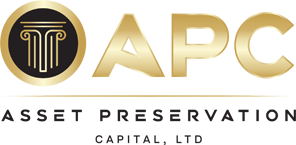Ian Berger, JD
IRA Analyst
In the August 16, 2021 Slott Report, we showed that someone participating in a 401(k) plan through a “regular” job could also establish a solo 401(k) plan through a side job and potentially contribute up to $58,000 this year in after-tax contributions to the solo plan. However, this only works if the company sponsoring the regular 401(k) plan and the entity sponsoring the solo 401(k) (e.g., a sole proprietor) are considered unrelated under IRS rules.
The reason this strategy is so appealing is that it allows you to immediately convert those after-tax contributions to a Roth IRA through the “Mega Backdoor Roth.” That way, you could fund a Roth IRA with amounts far in excess of the $6,000 (or $7,000 if age 50 or older) limit on annual Roth IRA contributions. Even better, the conversion would be virtually tax-free. The distribution of the after-tax contributions are non-taxable. Although the earnings are taxable, you could defer taxation by rolling them over a traditional IRA.
Bear in mind that a few conditions must be met for the Mega Backdoor Roth strategy to work:
1. The solo 401(k) plan must allow after-tax contributions.
2. The plan must also allow in-service distributions of after-tax contributions.
3. You would need to be able to afford to contribute the after-tax contributions.
Example: Erin has a regular job with Global Industries that sponsors a 401(k) plan and has recently established a solo 401(k) through a sole proprietorship. Global and Erin’s sole proprietorship are not considered related entities. Erin makes sure that her solo 401(k) offers after-tax contributions and permits in-service withdrawals of those contributions. Erin’s sole proprietorship is extremely profitable in 2021, allowing her to contribute $58,000 in after-tax contributions to the solo plan. Erin wants to take advantage of the Mega Backdoor Roth, so she takes a distribution of her after-tax account (consisting of $58,000 of contributions and $2,000 of earnings). She converts the $58,000 tax-free to a Roth IRA and rolls over the $2,000 to a traditional IRA.
Many regular (non-solo) 401(k) plans – especially those sponsored by small and medium-sized companies – do not offer after-tax contributions. That’s because those contributions are subject to an IRS “nondiscrimination” test. That rule prohibits after-tax contributions for higher-paid employees unless lower-paid employees make a certain level of contributions. Since high-paid employees are most likely to have the funds to contribute, that test is often impossible to pass. Without after-tax contributions, the Mega Backdoor Roth strategy doesn’t work. But solo 401(k)s are exempt from the nondiscrimation rule, so there’s no problem with permitting after-tax contributions in solo plans.
https://www.irahelp.com/slottreport/mega-backdoor-roth-ira-strategy-and-solo-401k-plans
